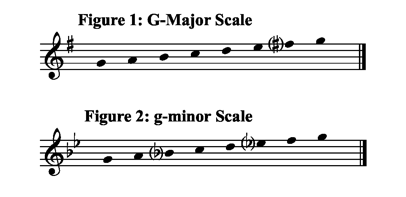Sound Reasoning
Table of Contents
Part II: Hearing Harmony
18.1 Hearing Harmony: What is Harmony?
18.2 Harmony in Western Music
18.3 Expressing Harmony
18.4 Listening Gallery: Expressing Harmony
18.5 Harmonic Rhythm
18.6 Listening Gallery: Harmonic Rhythm
18.7 Cadences
18.8 Listening Gallery: Cadences
18.9 The Tonic
18.10 Circular and Linear Progressions
18.11 Listening Gallery: Circular and Linear Progressions
18.12 The Major-minor Contrast
18.13 Modes and Scales
18.14 Hearing the Mode
18.15 Listening Gallery: Hearing the Mode
18.16 Tonic, Mode and Key
18.17 Listening Gallery: Tonic, Mode and Key
18.18 Music Within a Key
18.19 Listening Gallery: Music Within a Key
18.20 Postponed Closure
18.21 Listening Gallery: Postponing Closure
18.22 Chromaticism
18.23 Listening Gallery: Chromaticism
18.24 Dissonance
18.25 Leaving the Key
18.26 Harmonic Distance
18.27 Modulation
18.28 Harmonic Goals
18.29 The Return to the Tonic
18.30 Final Closure
18.31 Listening Gallery: Final Closure
18.32 Reharmonizing a Melody
18.33 Listening Gallery: Reharmonizing a Melody
18.34 Conclusion
18.25 Leaving the Key
Whereas diatonic progressions remain within a key, modulation involves moving between keys. Because it involves uprooting the music from a tonal center and moving to others, modulation is the most action-oriented part of harmony.
The structural import and expressive impact of a modulation is derived from the inter-relationship of three factors:
The “harmonic distance” travelled – the time spent in travel – the time spent in arrival
In order to understand this more fully, we need to explore several concepts about Common Practice tonality.
The Structural Equivalence of Keys
As noted earlier, the term key of the music indicates the tonic and mode. Thus, music in the key of G-Major makes use of the Major scale built on the tonic G; the key of g-minor shares the same tonic—g—but is in the minor mode.

Any pitch of the chromatic scale may serve as the tonic: Thus, there are twelve possible keys for each mode.
In modern tempered tuning, all keys of the same mode are functionally equivalent: They are like Club Scout chapters, sharing the same charter, hierarchy of officers and rituals. For example, singers sometimes find a song may lie in an uncomfortable range; so they transpose it to a higher or lower key. The music remains the same: It just slides up or down.
Here are two performances of Franz Schubert’s song Gesang des Harfners II: The music is identical except for the transposition.
Because of this equivalence, it is possible to move from key to key without any modification in musical syntax. Put another way, the rules of harmony don’t change when you change keys. This harmonic consistency makes the modulation intelligible: No written explanations or verbal remarks are required. What holds true in one key holds true in any other.
Musical commentators often speak of the “coloring” of different keys. This has largely to do with instrumentation: For instance, the keys of G, D, A and E sound “brighter” on string instruments because they allow for the use of open strings. Similarly, marches are typically in B-flat Major because of how brass instruments are tuned. Interpreters sometimes ascribe meaning or significance to particular keys: C-Major is Mozart’s “Coronation” key, “c-minor” is Beethoven’s key for funerals, etc. Applied too literally or categorically, however, these associations risk obscuring the underlying consistency upon which tonality depends: All keys of the same mode share the identical structure and their progressions are organized the same way.
